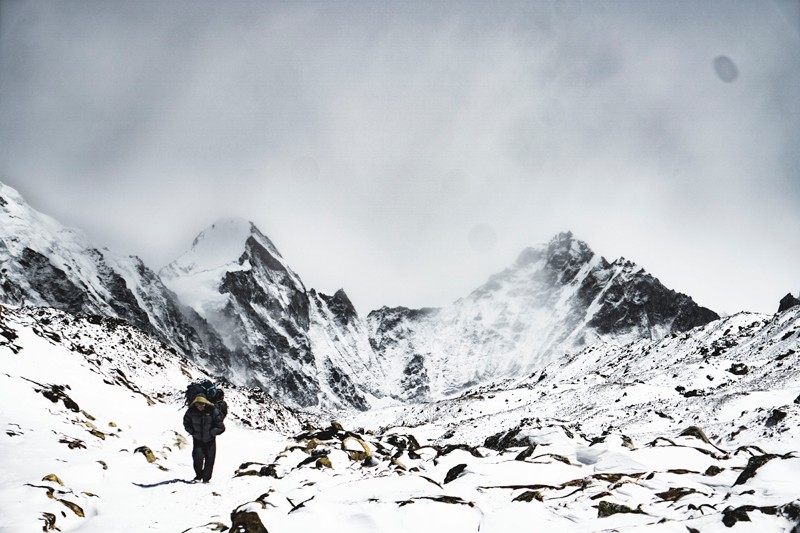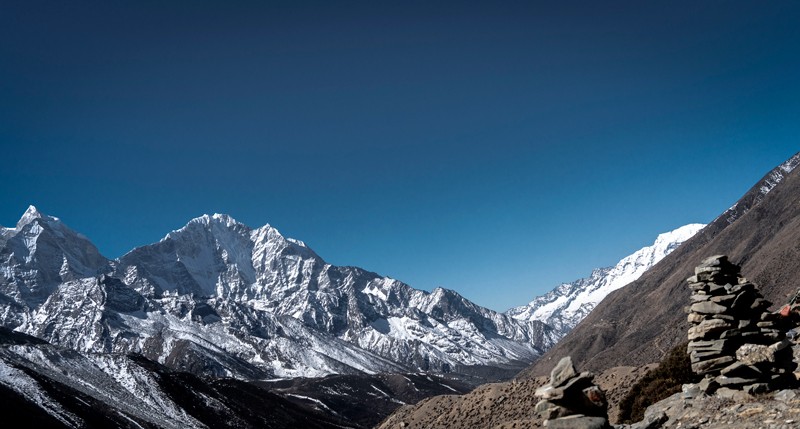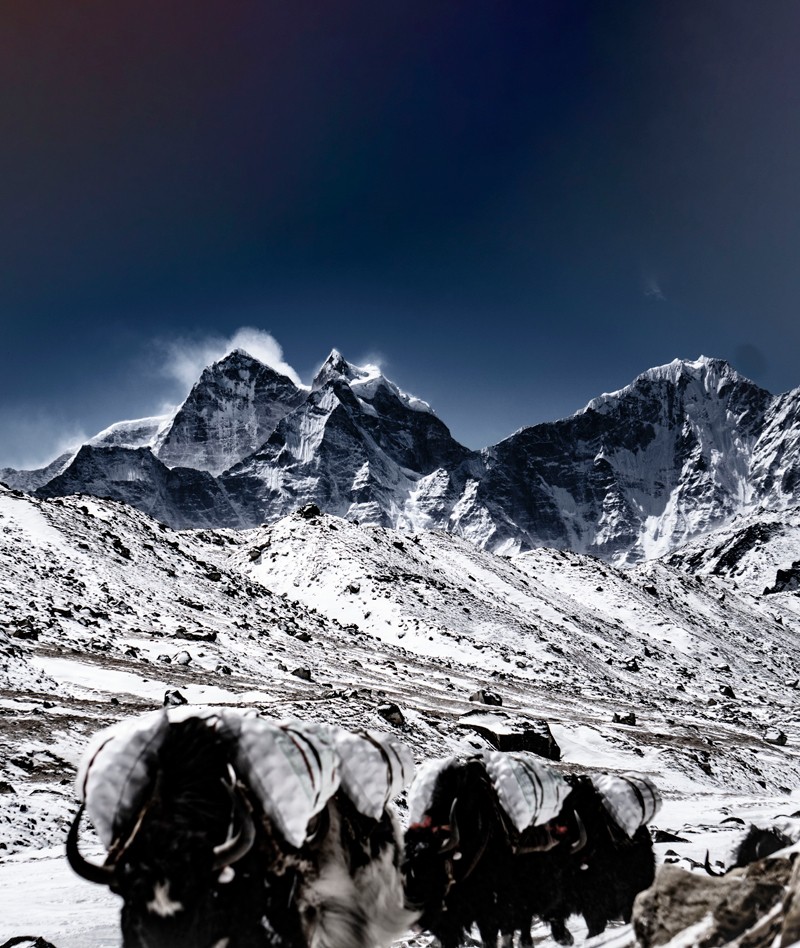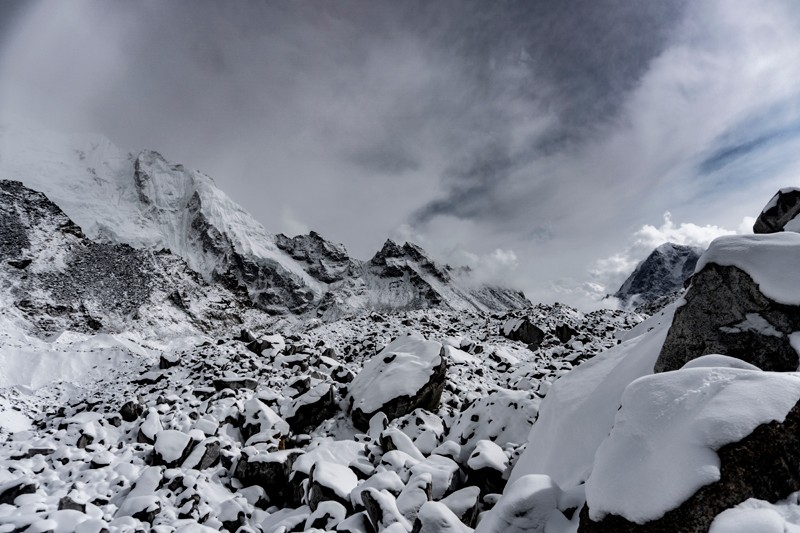If you are planning your trip to Everest Base Camp, then you must know about the weather that best suits you. It means every season is best to do the Everest base camp trek but all you need to do is choose one favorable season which best suits your personality and the environment and surrounding you want to be in. Rather than traveling on the base and pack season i.e. March-April and October-November here are what you will be able to experience while you travel Everest in other seasons.
Best Seasons To Trek Everest Region
Table of Contents
Everest Base Camp Trek in January/February (Winter)

Summary
January/February is the season for those who are wondering to explore the Everest region by taking the trail for themselves. All you need to do is bare the cold rewarding you with the hustle-free trail and majestic and clear views of the mountain.
Popularity
This season is not very popular among the trekkers and only about 7% of trekkers who visit Everest base camp are to trek during January/February. This means you are not going to be all alone, but you will get to enjoy the exploration and trekking to the fullest.
Natural Attractions
You will be able to witness rare wildlife like Himalayan Thar, Snow Leopard, Himalayan Monal, and Musk Deer. This wildlife during winter comes down to the valleys and even close to human settlements. And the main attraction is you will be able to see the Gokyo lake fully frozen and the ice reflecting the clear views of mountain panoramas.
Cultural Attractions
Chances are that the Sherpa New Year also known as Gallop Losar will fall sometime at the end of February.
Weather
During the nighttime, the temperature can be as low as -20 degrees C at 4,000 meters, it is tolerable during the day. Skies are clear except for a few days during which snowfall is likely. While clear skies make amazing mountain views possible. [Note: Clear skies coupled with snow cover increase the amount of UV exposure.]
Planning Tips
You need to prepare some good waterproof boots so that you can easily walk through the snow and buy warm layers including a good down jacket for the variation in temperature. High passes can be done but be prepared for deep snow at certain places. Crampons can come in handy. All you need to make sure of is to have good sunglass and sunscreen as UV exposure will be high. Flights are regular, but not all lodges are open. It makes sense to call them in advance. However, it will seldom be that all the lodges will be closed.
Everest Base Camp Trek in March/April (Spring)

Summary
If you want it all, the best season is March/April(spring) during this season you will get everything but the slightest. The trip is no fun if you get only one thing but if you are to get everything to enjoy then it’s the most amazing trip you will have. You will be able to experience the slightest of warm weather, mountain view, crowds and trekkers, and every other thing.
Popularity
This season is considered the second most popular season to trek Everest Base camp and about 25% of total trekkers to the Everest region travel during this season. It means there will not be much of a crowd, but you will experience everything. But if you are a little late and to arrive by April, the tented city of Everest Base Camp is buzzing with activity as April/May is the favored month for an Everest Summit.
Natural Attractions
March/April is the time of transformation. During this time snow begins to melt, and rhododendrons start to bloom at the lower altitudes. As flowers start to bloom, some of the smaller birds that had flown to the lower lands for the winter will gradually make their way up and by mid-April, the spring air is filled with a flurry of wildlife activity.
Cultural Attractions
Chances are very high that Buddha Jayanti, Lord Buddha’s Birthday, will fall around the end of April. Make sure to visit a monastery if you are around one during this day for some somber celebrations. The Sherpas are also preparing for a new agricultural cycle. Walls are repaired, compost is heaped, and the ground is readied for planting.
Weather
This season is only a bit warmer in the month of March compared to January/February while the nights are still cold and drop as low as -20 degrees C above 4000 meters. However, April is much warmer and at Namche, the mercury also starts to climb north of 0-degree C. As the months start to warm up, we also see an increase in precipitation with occasional thunderstorms and hailstones. However, the weather is generally good, and the mountain views are great.
Planning Tips
You need to Make sure to pack rainwear and buy warm layers. In addition, a good waterproof boot will be best for you to walk past through snow and mud. Flight disruptions at Lukla are unlikely but possible but if you are to plan your trip with a one- or two-day delay in mind it will be all good.
Everest Base Camp Trek in May/June (Summer)

Summary
It’s the best season for trekking to Everest Region and Everest base camp trek but you need to manage more days to your holidays so that you could compensate for the flight delays and cancellations. The views are great and imagine entering and exiting at Salleri without any associated risk.
Popularity
Given that trekking in the Everest Region is still heavily dependent on flights to Lukla, May/June isn’t yet a popular option with only about 10% of the trekkers coming in during this period.
Natural Attractions
If you are an explorer then it's the best period year as the Biodiversity is at its absolute best during this period. Lots of Rhododendrons blooming around some yellow, some red some blue, and all accompanied by the rare sight of wildlife is truly iconic. May/June will probably not disappoint you during your travel. The cacophony of the cuckoos and barbets is perhaps at its peak. Redstarts, laughing thrushes, and nutcrackers are busy showing off and fending their territories. All in all, for nature lovers, there isn’t a better time to go to the Everest Base Camp.
Cultural Attractions
May/June is also a very eventful period from a cultural point of view. In early May, you have the Buddha Jayanti. Throughout May, the Everest Base Camp is a hotbed of activity as mountaineers eyeing Everest are making their summit bids. May 29 is celebrated as Everest Day, commemorating the first ascent of the highest point of earth. On the same day, hundreds of marathoners navigate the treacherous terrain from Everest Base Camp to Namche as part of the epic Tenzing-Hillary Everest Marathon. Also, just around the corner in early June is the colorful Mani Rimdu festival at Thame.
Weather
As far as the temperature is concerned, it doesn’t get better than this. However, this period sees a marked increase in rainfall and snowfall. While mornings start clear and nice, it gets progressively cloudier and the day usually ends with some rain/snowfall. Even though the days can be overcast, UV exposure is something that needs to be considered.
Planning Tips
All you need to make sure is to wear your sunglasses even if it is overcast, especially at higher altitudes and when there is snow. You need to plan your trip flexibly if you planning to take a flight to Lukla. Or better yet, enter and exit from Salleri which 2 days are just a walk from Phakding.
Everest Base Camp Trek in July/August (Monsoon)

Summary
Normally it’s the season for those who are willing to make the trip thrilling, and adventurous and experience something different. It is only for those hardcore trekkers who are willing to put up with the elements for an authentic cultural experience and high-altitude flowers and can dare up to challenging weather, flight cancellation, and all.
Popularity
This season is the least popular among beginner trekkers and only about 3% of the trekkers come to Khumbu annually.
Natural Attractions
Even the alpine pastures are full of flowers by now and the entire Everest Region takes up a green veneer that is amazing.
Cultural Attractions
As both the trekking season and agricultural season end, the Sherpa villages finally breathe a sigh of relief and celebrate the Dumji festival. Also, given that for once the local people aren’t busy, you might even be able to strike up some meaningful and deep conversations with them.
Weather
The rumors are true. It does rain cats and dogs during the monsoon. However, the silver lining is that the rain shadow effect after Namche dampens some of the force of the monsoon and that mornings are usually dry. However, don’t count on good visibility.
Planning Tips
First and foremost, the tip is to forget about your flights to Lukla. If you are lucky enough, you will be able to attain a scheduled flight, or else there is very little chance. If you plan on walking from Jiri or Salleri prepare for leeches. However, no one has yet been injured by one of these innocent creatures. Just carry some salt, alum, iodine, or anti-leech oil if you don’t have the stomach for blood donation. Again, the silver lining is that past 3,000 meters leech density starts to thin out, and by the time you reach 3,500 meters you know you are past leech country.
